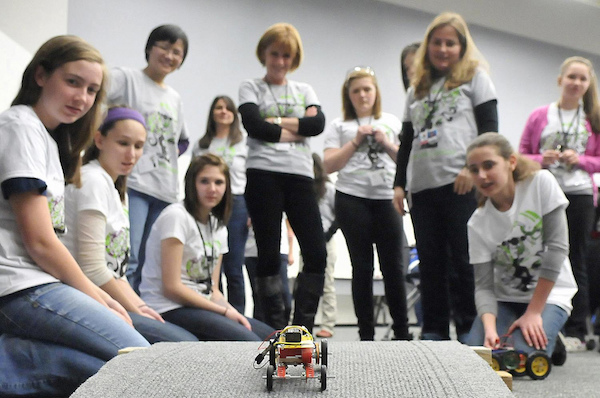How female engineering students view masculinity of typical engineer might explain piece of gender gap

LAWRENCE — Facebook and other Silicon Valley giants lately have grappled with issues of diversity and gender equity.
According to national news reports, a recent diversity report compiled for the social networking giant found that women account for 17 percent of the technical roles at Facebook, and another controversial finding revealed Facebook managers rejected code written by women much more frequently than their male counterparts.
A recent study led by a University of Kansas researcher might explain one contributing piece of the gender gap in engineering fields and STEM careers: Female engineering students consider the typical engineer to be more masculine compared to impressions of male students.
"It's an idea that probably starts when children are very young," said Margaret Kelley, a KU associate professor of American Studies. "Engineering schools are recruiting and bringing in younger girls for things like summer camps to try to balance out the gap. But we can see that this idea about gender and engineers is something that gets set early on in children's lives. These ideas are funneling women into certain areas and limiting their specialties and choices in certain ways."
Kelley, whose research focuses on gender, health and marginalized populations, was lead author of the study published in the journal Gender and Education. Her co-author was Kimberley Bryan, of the Department of Sociology at the University of Illinois at Urbana-Champaign.
The researchers surveyed first-year engineering students at a large Midwestern university during the fall of 2014. Respondents in the survey scored how they view typical engineers on 60 items of the Bem Sex-Role Inventory, which was developed by psychology researchers. Survey items included evaluating characteristics such as independence, willingness to take risks, and expressions of sympathy and understanding.
The study also sought to examine why female engineering students tended to cluster into certain fields of specialty, such as bioengineering, chemical engineering and computer engineering. Kelley said they found that the female students who entered those fields also had more masculine perceptions of engineers than male students in those specialties and female students in other specialty areas.
"It opens up the door that maybe their ideas about traditional engineering aren't affecting their specialty of choice as much as we thought, but overall women do consider typical engineers to be more masculine than do men," Kelley said.
This gendered view of engineers might be limited to the educational and social environment for female students who grew up in the United States because the researchers found international students viewed the typical engineer as less masculine than white students.
"The international students did not hold these ideas as strongly," Kelley said. "It's not inevitable."
While some might consider the major implications to be finding a way to change how female students view the profession of engineering as masculine, Kelley said the nuances in the findings appear to be more encouraging to her on how to begin addressing the gender imbalance in STEM fields.
"Girls are still going into engineering. It might be that we don't need to necessarily change the idea that engineers are masculine but target how girls and boys can both do masculine and feminine things," Kelley said. "That way we are not focusing on changing the image of an engineer but the determination or willingness to try different things based on the way they identify themselves."
Photo courtesy of Flickr: March 8 marked International Women's Day, and the recognition of women's achievements all over the world. At the Energy Department and each of the National Laboratories, some of the nation's top women scientists and engineers attend events to urge girls to open their minds to careers in science, technology, engineering and math (STEM). In this February 2012 photo, a group of eighth grade girls were invited to Argonne National Laboratory to participate in events during the annual Introduce a Girl to Engineering Day. Division director Amanda Petford-Long and other Argonne mentors are pictured observing a trial run of race cars built by the eighth-grade students.